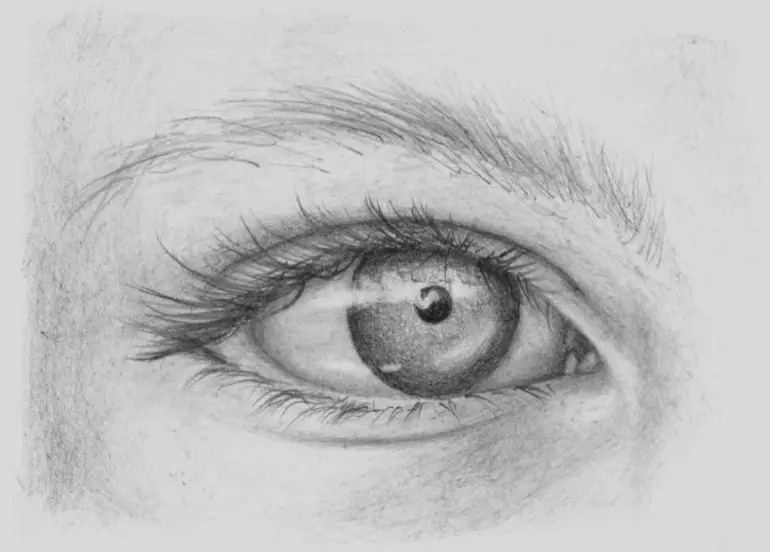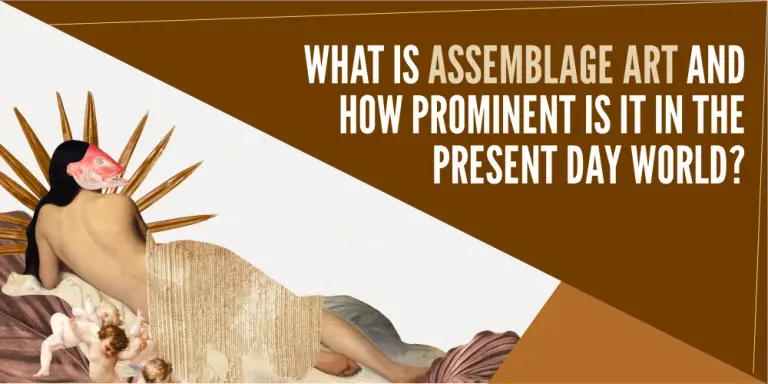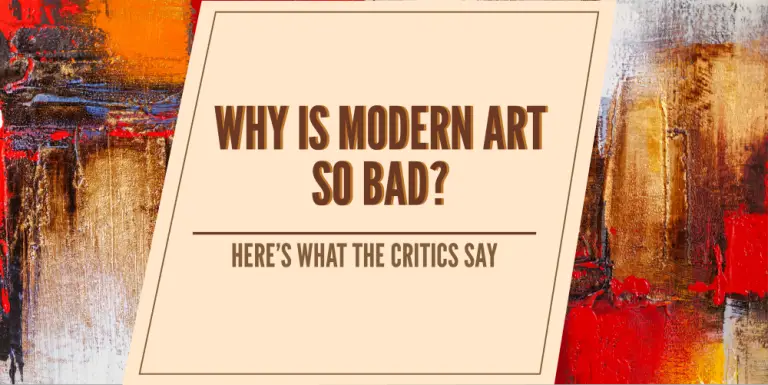What is Traditional Art? The Present Day Concept and Revival
What is traditional art? It began with muddy handprints slapped on cave walls and progressed to mediums that are still practiced today, such as painting, drawing, and sculpture. Traditional arts include any type of creative practice passed down through generations.
The intention of traditional art is to express cultural and religious ideas, as well as celebrate nature, family, and history. It showcases skills and knowledge from previous artisans and poetry and graphic arts from the past.
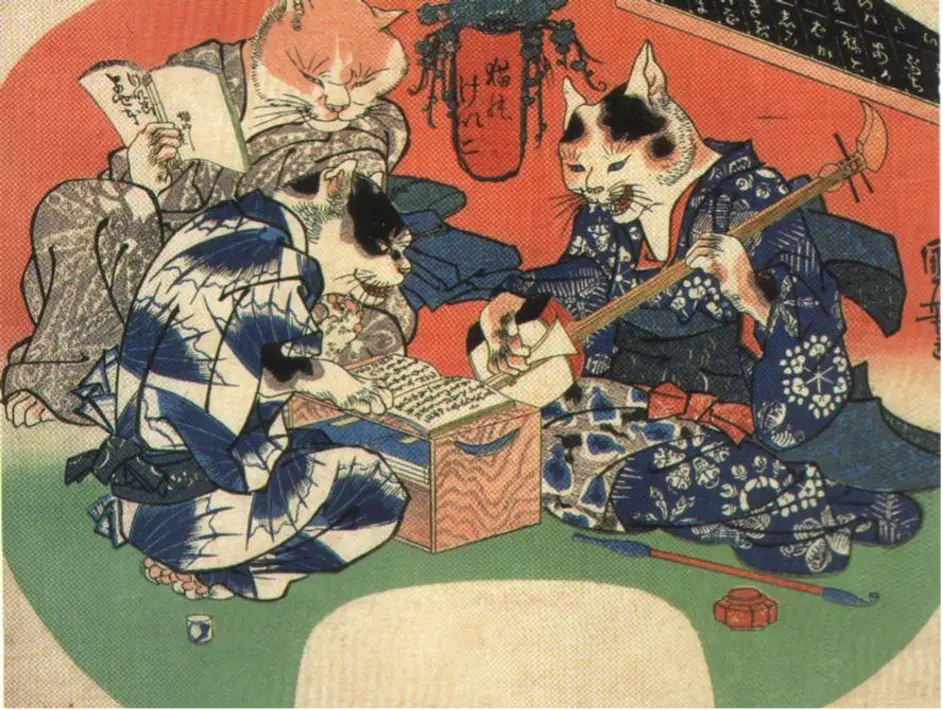
(This article may contain affiliate links and I may earn a commission if you make a purchase)
https://commons.wikimedia.org/wiki/File:Japanese_traditional_furry_art1.jpg
The Two Traditional Art Styles
Even if naive or symbolic in content, traditional art always boasts a realistic or narrative style. It is usually representational and documentarian and may involve craft skills such as clay work, mosaic work, or egg tempera painting.
There are two main categories of traditional art styles: narrative art and folk art. Narrative art evolves from its roots in classicism, following basic rules about representation, whereas Folk art is almost a distortion of these rules, adhering to cultural content and non-evolving mediums.
However, Folk art is still classified as narrative work, because it still tells a myth or story, but is more specific to a single culture. It is also figurative in nature.
Traditional narrative styles dominated all art until non-narrative art came into being with the advent of Modernism. Modernism evolved as a visual art style in the 1870s, resulting in Abstract, Impressionist, and Expressionist work.
In the following sections, we look at some of the traditional styles embraced by both Narrative art and Folk Art.
Traditional Narrative Styles in Art
Narrative art simply refers to any type of art that tells a story with a picture or pictures. It is important to note that each style of narrative art is often formed by its own culture or language.
Traditional narrative art generally depicts topics of a more somber and documentary nature. They use almost every medium that is still in use by artists today, including drawing, painting, and sculpture. All of the described narrative styles also apply to the hundreds of genres of Folk Art.
Below is a list of traditional narrative styles that apply to both classical and folk art.
Geometric or Abstraction
Geometric and abstract works are as old as the human race and focus on the use of geometric or abstract designs. These shapes are arranged in patterns that have a symbolic or literal meaning. Some of these patterns end up as a leitmotif on the border of a hand-crafted rug or vase.
The original meaning of some of these folk graphics may be lost. However, they are still significant, appearing in everyday life as part of a fabric pattern, engraving on a ring, or architectural detail.
Monoscenic
Monoscenic artwork depicts one action and a single set of characters. This traditional art perspective was the painterly equivalent of taking a snapshot before photography existed.
Imagined or real scenes were depicted by countless sculptors and painters. The idea was to capture an “action moment” through the lens of the eye of the artist. Monoscenic paintings were also called anecdotic paintings.
Most sculptures were also monoscenic in style. The marble sculpture created by Michelangelo, known as the Pieta (1499), depicts Jesus in the lap of Mary and is a traditional monoscenic work of the Renaissance.
Thousands of traditional landscape paintings also fall into this category, and a good example would be Wivenhoe Park Essex (1886) which depicts cows grazing by a pond. The purpose of this type of painting was to capture a wonderful moment in time.
Multi Scenic
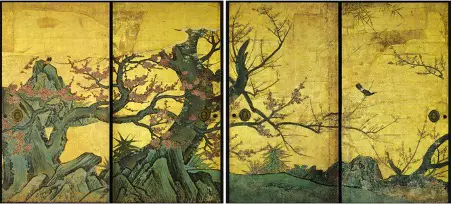
Multi Scenic paintings could be compared to today’s storyboards, where the story is told in one continuous story within one frame or in different mounted panels.
A famous traditional art example from ancient Greece is the Column of Trajan (113 AD), which depicts the Dacian wars’ entire story. The story is told in a carved marble frieze that spirals around a large column.
Another great example of a multi scenic piece of traditional folk art is the Bayeux Tapestry (1066.) This is an enormous swath of embroidery that depicts the Norman invasion of England. It is likely the handiwork of several crafts persons.
Panoramic
Panoramas were often designed to depict multiple scenes in an omniscient way to show you all of the action at once. Ancient Greeks, Romans, and Egyptians often used the panoramic narrative style to tell stories in their works of classical art.
One of the most famous friezes in the world is inside The Parthenon (447 BC) and is dedicated to the goddess Athena. The marble frieze carving depicts the progression of a parade during an ancient pagan festival and portrays multiple repeating characters.
Landscape
The term landscape is almost synonymous with the term traditional painting. This art category is massive and covers everything from classical painting to traditional folk art.
Famous painters in the world of art that created traditional landscapes include Guo Xi (1020-1090), who painted with ink in the Chinese Taoist Tradition, Pieter Brueghel (1530-1569) of the Dutch Golden Age of Painting, and John Constable (1776-1837) of the British Romantic Tradition.
Portrait
The desire to capture someone’s likeness is an ancient impetus that has been practiced in every medium. Portraiture exists in every age and culture, from casting the gold mask of the Egyptian pharaoh Tutankhamen in 1325 BC to the painting of a Girl With A Pearl Earring (1165) by Dutch painter Johannes Vermeer.
Perhaps the most famous traditional portrait in the world is that of the Mona Lisa (1509), painted by Leonardo Da Vinci. Famous folk art portraitists include Maude Lewis (1903-1970), while a contemporary revivalist portraitist is American John Mcnaughton (1970 -), who does classical portraits of Donald Trump in Biblical settings.
Traditional Art Movements
There are hundreds of narrative art movements that are defined as traditional artwork. The following sections describe some of the most important and familiar of these traditional movements.
Keep in mind that this is a limited list and there are many more movements than this. Many of these narrative styles are characterized by techniques and themes that are still useful today.
Ancient Classical Art
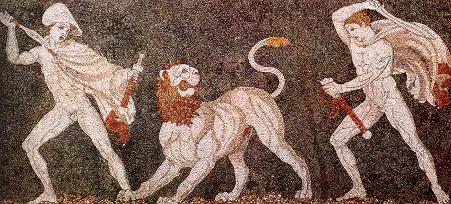
https://commons.wikimedia.org/wiki/File:Lion_hunt_mosaic_from_Pella.jpg
The term “classical art” groups together all visual arts that existed before 500 BC. These are the art world treasures from Ancient Egypt, Greece, and Rome.
This important seminal era in the art world produced marble statues, carvings, friezes, pottery, sculpture, and monumental architecture. Knowing about art created during these times is essential for art education.
Medieval Art
This medieval art movement (500 – 1550) produced thousands of textiles, paintings, carpentry, and ironwork. Illustrations were awkward and cartoon-like, and landscapes rendered in 2-D lacked depth and proportion.
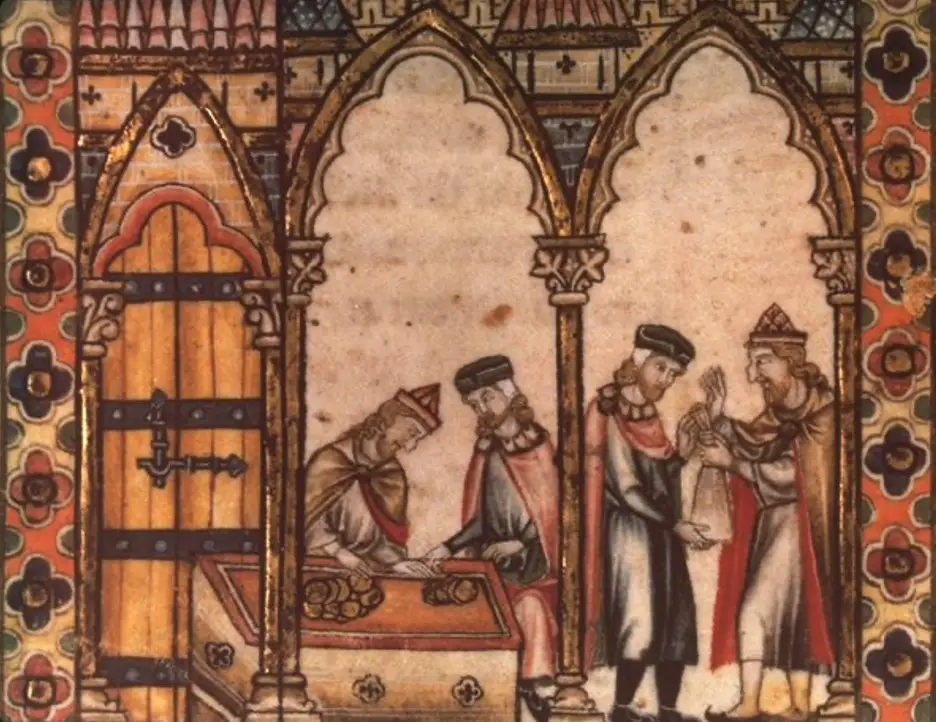
https://commons.wikimedia.org/wiki/File:Medieval-Jewish-moneylenders.jpg
Many works were multi-scene or panoramic, inserted into elaborate circular or arch-shaped frames. The two signature themes in medieval visual arts are war and religion.
This 1000-year era in visual art also embraces many minor traditions, including Byzantine, Coptic, Christian, Celtic, and Gothic. It produced countless glass windows, friezes, frescos, busts, statues, wood carvings, and paintings.
Renaissance Art
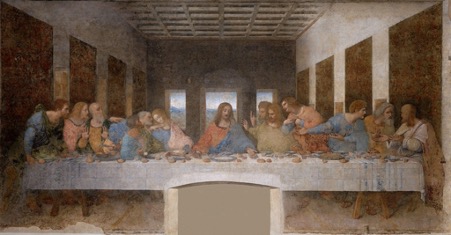
The Renaissance Art movement (1450 – 1660) served the useful purpose of bringing realism to the fore. Master painters deployed 3-point perspectives to create realistic depictions of the world. The themes were mostly religious, mixed with scenes from mythology.
This was also the era of the traditional portrait. Rich patrons paid artists well to be painted into Biblical scenes. Bizarre landscapes featuring golden clouds and crumbling Roman architecture were also popular.
Baroque Art
The Baroque movement (1600 and 1725) was the era of the theatrical still-life and dramatic portrait. This period also introduced the dramatic chiaroscuro painting style, where objects or people were painted with dark shadows and glowing highlights.
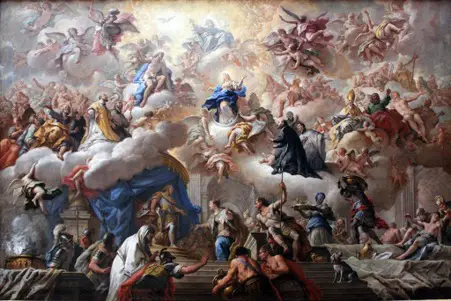
https://commons.wikimedia.org/wiki/File:1710-15_de_Matteis_Triumph_of_the_Immaculate_anagoria.JPG
The Baroque style was also known for its detailed natural landscapes and idyllic pastoral scenes that resembled heaven on earth. Clusters of people or livestock were also often featured in real-life Baroque scenes, often alluding to the Biblical flock.
Rococo Art

https://commons.wikimedia.org/wiki/File:Adriano_Cecchi_1850-1936_Rococo_scene.jpg
The Rococo movement (1720-1760) was a short but merry art movement that featured lavish depictions of French and Italian middle-class life. Scenes of pure joy were painted in heavenly landscapes, mostly of upper-class family life.
This era was also known for mythological group scenes and many depictions of angels and cherubs, but in a way meant to represent reality. Portraits of hunting dogs and horses were also popular.
Neoclassical Art
Neoclassical art (1760-1830) was a revivalist movement that brought backlighting, drawing skills, and figures associated with the Classical era. It was known for paintings with dramatic, staged scenes.
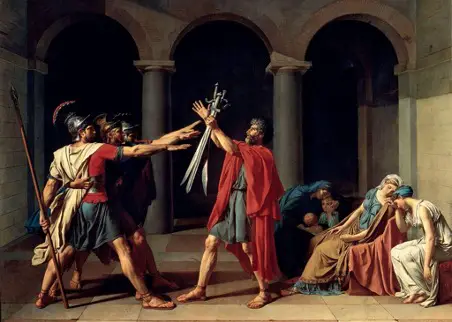
https://commons.wikimedia.org/wiki/File:Jacques-Louis_David,_Le_Serment_des_Horaces.jpg
Groups of figures were posed and cloaked in drapery and then posed indoors, in pseudo castles and temples with perfect perspective. The subject matter was almost always scenes from Greek mythology, such as The Death of Socrates (1787) by Jaques Louis David.
Romantic Art
Romantic art blossomed for 50 years from 1800 to 1850 and focused on dramatic scenes from nature. Storms, sunsets, beaches, and fires were common subjects.
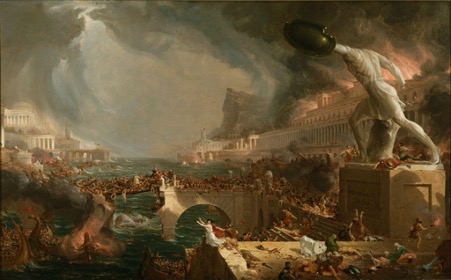
https://commons.wikimedia.org/wiki/File:Cole_Thomas_The_Course_of_Empire_Destruction_1836.jpg
Romantic drawing and painting were also characterized by fantastic panoramic visions of heaven or hell or scenes from the Bible. A great example of this type of romantic painting is The Course of Empire Destruction (1836) by Thomas Cole.
Realist Art
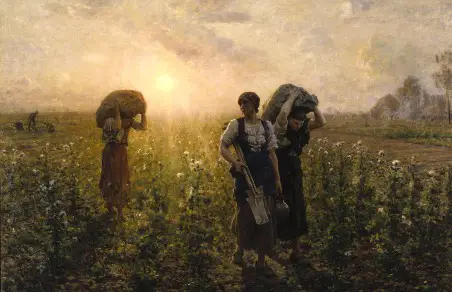
Realist Art (1840 -1870) was the last true narrative, traditional art movement before the era of Modern art was ushered in at the turn of the century. Realism was almost documentary in style, depicting the hardships of everyday life.
The movement was characterized by a darker palette and scenes of ordinary people toiling in the fields and factories. This grim departure from fantasy and bright colors that were part of the Romantic era eventually ushered in the Modernist movement.
Present Day Concept and Revival

There is no narrative style on the list of traditional art movements that have not been revived in contemporary art, starting with the many contemporary redos we see of the portraits and landscapes.
A great example of traditional art revival is adding texts or images to landscape paintings found in thrift shops. Using an existing wall or landscape as a canvas or a famous sculpture as the object of modern revisionism is also a form of folk architecture.
Perhaps the most common revivalist concept is to take the technique or style of a bygone era, such as Baroque or Rococo, and redo them as post-apocalyptic landscapes using a digital painting process.
Whenever drapery is used in modern artwork, it is usually a nod to the classical or neoclassical movements in painting. The same is true of chiaroscuro, the Goyaesque lighting of subjects in bright lights and harsh shadows.
Popular Forms of Folk Art
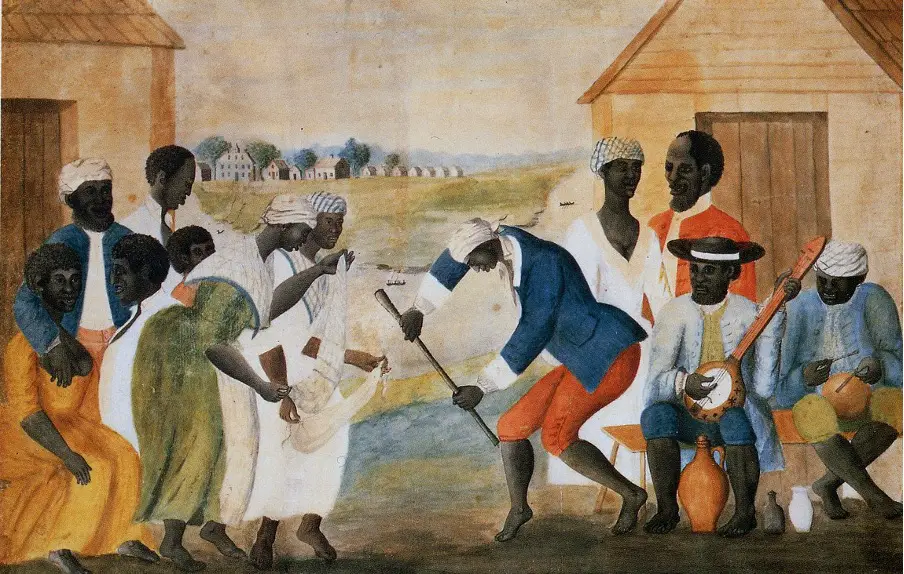
https://commons.wikimedia.org/wiki/File:SlaveDanceand_Music.jpg
Traditional art forms are generally characterized by traditional media such as paper, canvas, clay, marble, wood, fabric, thread, and beads. These art forms can also include music, dance, and literature and often intersect with popular culture.
Arts and Crafts
The entire global realm of traditional folk art mainly consists of arts and crafts. Creators such as blacksmiths, goldsmiths, cobblers, painters, potters, and weavers practice a craft the same way it was done years ago.
Folk performing arts, labor songs, and folk music might also be part of the knowledge passed down from ancestors to a certain group of people. Other skills that fall into the folk art category are embroidery, weaving, carving, engraving, floor painting, wall painting, beading, quilt-making, egg-decorating, and jewelry making.
Kitsch
Kitsch refers to folk art that people collect for pure joy. They can be paintings, wood carvings, or plastic art that are hoky or funny in some way.
Kitsch could be described as folk art gone wrong. Examples of kitsch include plastic freestanding pink flamingos, garden gnomes, and plaque-mounted singing fish. If the folk art was somehow ruined during the creation process, making it one of a kind, that sometimes increases its value.
Tattoos
Tattoos are considered a folk tradition that is crossed with outsider art. Classic designs once in the realm of sailors, carnival workers, and prisoners have been passed down through generations and are now prized as works of art.
Religious symbols, numbers, and geometric symbols are part of tattoo folk art, as are armbands of full ink from Celtic, Viking, and indigenous tribes.
Folk Art Revival
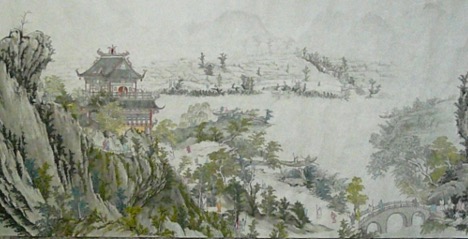
https://commons.wikimedia.org/wiki/File:A_part_of_Giant_Traditional_Chinese_Painting.JPG
Folk art, decorative arts, and even the plastic arts can be defined as traditional, depending on how the practice of the art form has been funneled down through history and whether or not its practice is obsolete.
In fact, the revival of lost arts and crafts is a part of today’s post-modern art movements, featuring domestic crafts presented in the context of fine art. An example would be on-site crochet art (aka Yarn Bombing), where artists crochet massive works and attach them to trees and fences. The style is post-modern, but the medium is a traditional folk art craft.
Traditional and Digital Art
The primary distinction between digital and traditional art is that it exists in a three-dimensional form in the real world and not in the realm of electronic transmission.
Traditional artworks are one of a kind and must be propagated by hand. However, the digital arts are now decades old and are trickling into sub-genres called digital folk art and folk meme art.
FAQs About Traditional Art
Here are some FAQs about traditional art.
What Types of Art Are Not Considered Traditional Art?
Several styles are not considered to be part of the traditional arts. This includes many modern and postmodern art movements in the 20th century, including Vorticism, Dada, Bauhaus Fauvism, Minimalism, Expressionism, Cubism, Surrealism, Conceptual Art, Pop Art, and Outsider Art.
Where Can I Buy Folk Art?
One of the best places to buy folk art is at your local thrift shop. It is also a good place to find fine art treasures that have been passed down through generations.
What is A Folk Graphic?
A folk graphic is a singular image or design that somehow symbolizes a culture’s folklore. A good example would be the graphic painted on a Ukrainian hand-painted egg or the designs painted on Tibetan prayer flags.
What is Traditional Art – Final Words
Traditional art styles are practiced in the present day exactly as they were centuries ago. Artists use the same narrative forms, materials, myths, and stories to express themselves in contemporary art. These techniques are usually passed down from a learned person and adapted to a modern interpretation.
Just about everything old about traditional art is new again as history repeats itself. In the modern art world, we see elements from every traditional era being resurrected around us in the form of paintings, sculptures, and architecture.


